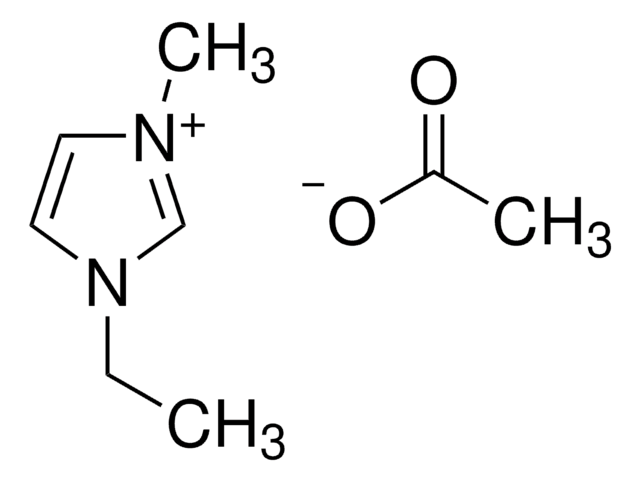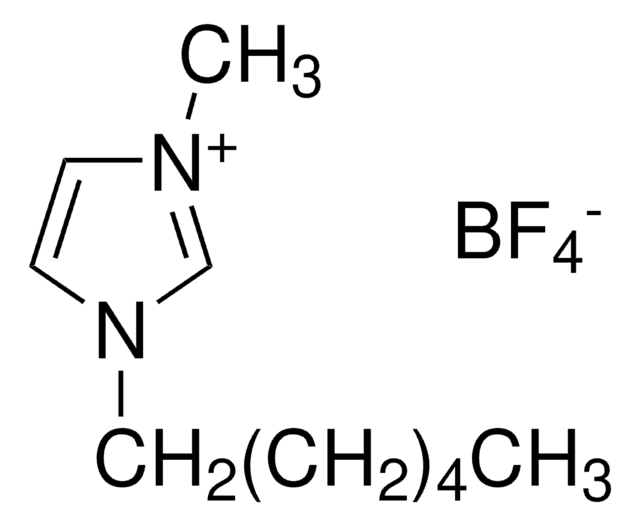900772
1-Ethyl-3-methylimidazolium tetrafluoroborate
≥99%, <1000 ppm H2O
Synonym(s):
1-Ethyl-3-methyl-1H-imidazolium tetrafluoroborate, 1-Methyl-3-ethylimidazolium tetrafluoroborate, EMIMBF4
About This Item
Recommended Products
Quality Level
Assay
≥99%
form
liquid
impurities
<1000 ppm H2O
refractive index
n20/D 1.413 (lit.)
bp
>350 °C (lit.)
mp
15 °C (lit.)
density
1.294 g/mL at 25 °C (lit.)
application(s)
battery manufacturing
SMILES string
F[B-](F)(F)F.CCn1cc[n+](C)c1
InChI
1S/C6H11N2.BF4/c1-3-8-5-4-7(2)6-8;2-1(3,4)5/h4-6H,3H2,1-2H3;/q+1;-1
InChI key
CUNYTRQQXKCRTJ-UHFFFAOYSA-N
Looking for similar products? Visit Product Comparison Guide
Related Categories
General description
Application
related product
Signal Word
Warning
Hazard Statements
Precautionary Statements
Hazard Classifications
Acute Tox. 4 Oral - Aquatic Chronic 2
Storage Class Code
10 - Combustible liquids
WGK
WGK 3
Flash Point(F)
235.4 °F - closed cup
Flash Point(C)
113 °C - closed cup
Certificates of Analysis (COA)
Search for Certificates of Analysis (COA) by entering the products Lot/Batch Number. Lot and Batch Numbers can be found on a product’s label following the words ‘Lot’ or ‘Batch’.
Already Own This Product?
Find documentation for the products that you have recently purchased in the Document Library.
Customers Also Viewed
Articles
Solid-state Li batteries: Review of solid electrolytes, ion conduction, structures, and electrochemical processes.
Ionic liquid electrolytes explored for rechargeable batteries' advancement; future IL development discussed.
Our team of scientists has experience in all areas of research including Life Science, Material Science, Chemical Synthesis, Chromatography, Analytical and many others.
Contact Technical Service










